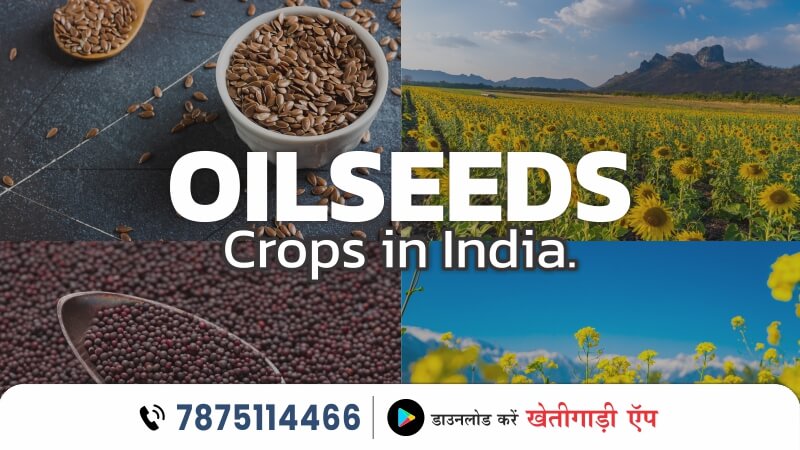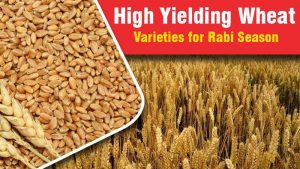India is one of the world’s top producers and consumers of vegetable oils. India’s agricultural economy has historically been based on oilseeds. Next to China, Brazil, and the United States, India has the fourth-largest vegetable oil economy in the world. In terms of acreage and production, oilseed crops are second only to food grains in importance to India’s agricultural economy. A large variety of oilseeds are grown in India since the country’s environment is favorable for their cultivation.
A significant group of commercial crops in India are oilseeds. Oilseeds are an essential part of our nutrition, and the oil collected from them is used to make a variety of products, including paints, varnishes, hydrogenated oil, soaps, perfumes, lubricants, and others. Oil cake, the residue left over after oilseeds are stripped of their oil, is a crucial component of both manure and animal feed.
What are oilseeds?
Whole oilseeds have a high-calorie content and a modest amount of protein and fiber. Oilseeds are widely employed in the diets of lactating dairy cows as a source of energy. When given to lactating dairy cows, processing entire oilseeds changes the site and degree of nutritional digestion as well as the production response. For all types of dairy cattle, oilseed meals are utilized as protein supplements.
The method employed to extract the oil from the oilseed affects the meal’s final nutritious composition. It may be preferable to prepare these ingredients to lessen their degradability before feeding in some circumstances because the protein from whole oilseeds and oilseed meals is highly destroyed by the ruminal bacteria.
A large variety of oilseeds are grown in India since the country’s environment is favorable for their cultivation. Groundnut, Rapeseed, Mustard, Castor Seed, Sesame, Nigerseed, Linseed, Safflower, Sunflower, and Soybean are the principal oilseeds grown in our nation. However, a significant portion of the output is made up of groundnut, rapeseed/mustard, soybean, and sunflower.
Oilseed Cultivation:
The area planted with oilseeds has been growing through time, and the production has multiplied, but its productivity is still poor when compared to other countries in the world that also produce oilseeds. Oilseed crop production is generally done on marginal lands, which lack irrigation and employ low amounts of inputs, which is the main cause of the low and erratic productivity. The Indian government has been pursuing a number of development plans to better the position of oilseeds in the nation.
Key Points to increase oilseeds crops production in India:
- Extending irrigation to more oilseed fields
- Encouragement of cutting-edge agriculture technologies and improved dry farming
- Encouraging the growth of oil palm.
- To further revitalize the oil sector, it is necessary to broaden the scope of research, spread new technologies, and institutional action. Increasing public research funding in oilseed crops for the creation of strains resistant to biotic and abiotic stress is one aspect of this.
- To meet the demand for a better yield specific to each variety, strengthen the oilseed crop seed chain, especially in the case of peanuts.
- Encourage private sector involvement in oilseed crop processing and value addition. Constraints for poor capacity usage should also be taken into consideration.
- Ensure the availability of essential financial (loan options, crop insurance), technical (extension services), and physical (fertilizers, pesticides) inputs in the main agricultural ecological zones for oilseed crops.
- To ensure a competitive market for oilseeds and edible oil, in addition to adequate protective measures to prevent unfair competition from the international markets, other measures would include market reforms and policies, such as contract farming and public-private partnerships in production and processing.
Some of the major oilseeds crops in India are listed below:
- Groundnut
The majority of the major oilseeds produced in India are groundnuts, which account for half of all the nation’s production of oilseeds. Although it is also cultivated as a Rabi crop, groundnut is primarily a Kharif crop. For the Kharif crop, 90 to 95 percent of the total area is used. This legume prefers a tropical climate with temperatures between 20 and 30 °C and rainfall between 50 and 75 mm. The crop is extremely vulnerable to drought, frost, constant rain, and stagnant water. When it is ripening, it needs a dry environment. It grows well on red, yellow, and black soils, as well as well-drained light sandy loams. Gujarat, Rajasthan, and Tamil Nadu were the top three states in terms of ground nut production in 2015-16.
- Mustard/Rapeseed
India’s second-largest oil seed crop is mustard, behind groundnut. This planet belongs to the Brassica family, and farmers in India primarily cultivate the following three mustard species:
India Around 70% of all mustard produced in India is mustard, often known locally as “rai” or “mohr” and scientifically known as Brassica juncea.
Rape Seed, also known as Toria, is primarily farmed in Punjab and has reddish seeds.
- Sesamum (Til)
The oil found in sesamum seeds, which can be utilized for cooking, fragrance, and pharmaceutical production, ranges from 45 to 50 percent. The world’s greatest area planted with sesame is in India, which is also the leading producer of this crop, accounting for one-third of global output. In India, it is mostly a rainfed crop.
- Linseed
The oil content of linseed ranges from 35 to 47%. This oil is used to create paints, varnishes, printing ink, oil-cloth, and water-resistant fabrics and has a special drying quality. In some areas of the nation, it is also utilized as a food oil.
Despite the fact that this crop may be cultivated in a variety of environments, it likes a cool, moist climate with an average temperature of 20°C and 75 cm of rainfall. The ideal soil types for its cultivation are clay loams, dark black soils, and alluvial soils. The maximum height at which it may be grown is 800 meters above sea level. The rabi crop is planted in October or November and harvested in March or April.
- Castor Seed
Castor seed contains 50% oil, which is used for a variety of things, including lubrication in equipment, hair oil, lighting, the production of soap, and tanning leather. Silkworms are fed plant leaves and oil cake is utilized as manure.
Visit the Khetigaadi mobile application to learn more about tractors, tractor prices, tractor games, and tractor videos. You can also check out the Khetiguru mobile app for updates on farming.




